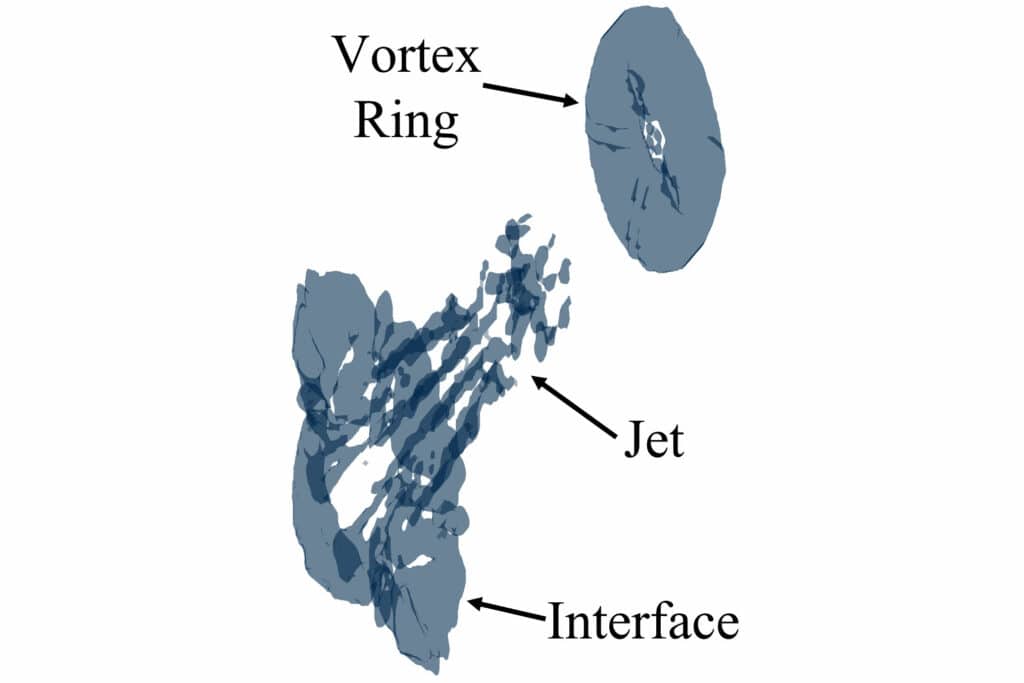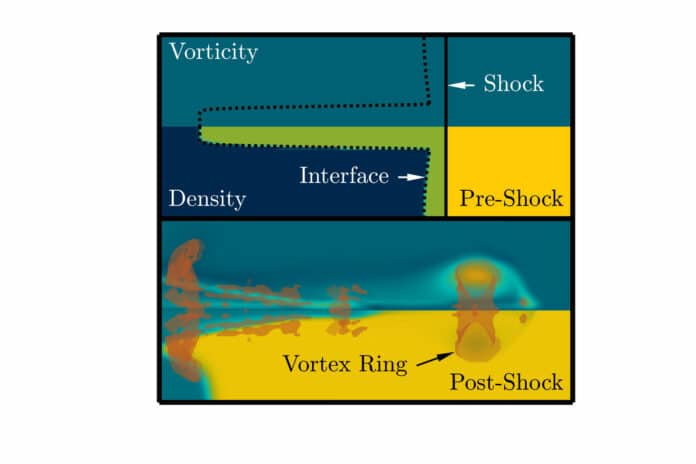Vortex rings are swirling, ring-shaped disturbances that move outward from the collapsing star. These rings populate the universe with material, leading to the formation of nebulae, planets, and even new stars—and inward during fusion implosions, disrupting the stability of the burning fusion fuel and reducing the efficiency of the reaction.
New research by the University of Michigan explains how such vortex rings form. According to scientists, a better understanding of the formation of vortex rings could help nuclear fusion researchers compress fuel more efficiently.
Scientists have developed a model that could help design the fuel capsule. It could minimize the energy lost while trying to ignite the reaction that makes stars shine. Moreover, the model could potentially help other engineers who must manage the mixing of fluids after a shock wave passes through and also physicists trying to understand supernovae.
Michael Wadas, a doctoral candidate in mechanical engineering at U-M and corresponding author of the study, said, “Our research, which elucidates how such vortex rings form, can help scientists understand some of the most extreme events in the universe and bring humanity one step closer to capturing the power of nuclear fusion as an energy source.”
Atoms are pushed together by nuclear fusion until they fuse. The energy released by this process is many times greater than the energy released by the fission that fuels nuclear power plants today. Scientists may engineer this reaction by fusing different kinds of hydrogen into helium, but currently, a large portion of the energy needed in the process is lost.
The inability of the fuel to be cleanly compressed is one aspect of the issue. Instabilities lead to the production of jets that breach the hotspot, and the fuel spurts out between them. Vortex rings that form at the leading edge of these jets are mathematically similar to smoke rings and the plasma rings that fly off the surface of a supernova.
A spherical array of lasers aimed toward a fuel capsule in the shape of a sphere is perhaps the most well-known fusion method. At the National Ignition Facility, which has recently set numerous energy production records, experiments are set up this way.

The laser energy vaporizes the fuel layer, which in the most recent record-setter in December 2022 was a virtually flawless, lab-grown diamond shell. The fuel is forced within as the carbon atoms fly forth as that shell vaporizes. A shockwave is created, pushing the fuel so strongly that the hydrogen ignites.
The spherical fuel pellets are among the roundest items mankind has ever created, yet each includes a fill tube where fuel enters, which is a deliberate flaw. This is the most likely location for a vortex-ring-led jet to form when the compression begins.
Eric Johnsen, an associate professor of mechanical engineering at U-M who supervised the study, said, “Fusion experiments happen so fast that we only have to delay the formation of the jet for a few nanoseconds.”
Scientists could build on and extend the corpus of information already available rather than attempting to describe the structures observed in fusion experiments and astrophysical data as entirely novel features.
As some mixing process must have taken place to form the composition of planets like Earth, Johnsen is particularly interested in the potential that vortex rings could assist in mixing heavy elements and lighter elements when stars explode.
The model can also aid researchers in understanding the maximum amount of energy that a vortex ring can hold, as well as the maximum amount of fluid that can be pushed before the flow turns turbulent and becomes more challenging to model. The team is currently conducting studies to validate the vortex ring model.
Journal Reference:
- Michael J. Wadas, Loc H. Khieu et al. Saturation of Vortex Rings Ejected from Shock-Accelerated Interfaces. Physical Review Letters. DOI: 10.1103/PhysRevLett.130.194001
